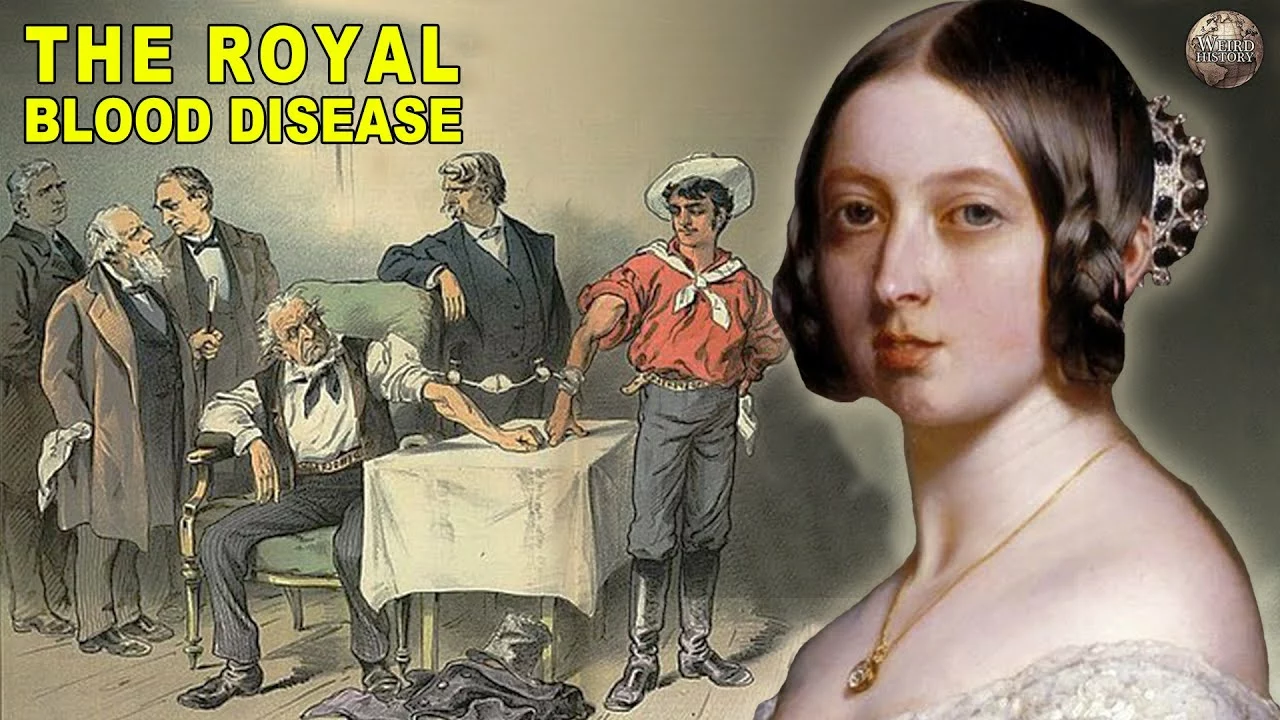The Royal Roots of Hemophilia
As we dive into the history of hemophilia, it's essential to understand its royal origins. Hemophilia is often referred to as the "Royal Disease" because it was prevalent among European royalty, particularly within the British, Spanish, and Russian royal families. The first known case of hemophilia was recorded in the 19th century and traced back to Queen Victoria of England, who was a carrier of the hemophilia B gene. This gene was then passed on to her descendants, making it a common affliction among royal families.
It's fascinating to see how hemophilia became associated with royalty and the impact it had on these families. The inheritance of this genetic disorder led to several tragic events, such as the untimely death of Prince Leopold, the youngest son of Queen Victoria, due to a hemorrhage. Hemophilia also played a crucial role in the downfall of the Russian royal family, as Tsarina Alexandra's son, Alexei, suffered from hemophilia. The family's reliance on the mystic Rasputin to treat the young prince eventually contributed to their demise during the Russian Revolution.
Early Understanding and Misconceptions
In the early days of hemophilia, the disease was not well understood, and many misconceptions surrounded it. People believed that those with hemophilia were cursed or punished by God due to their royal lineage. Furthermore, since the disease was passed down through families, it was thought to be contagious. As a result, people with hemophilia were often isolated and shunned by their communities.
It wasn't until the late 1800s that researchers began to better understand the nature of the disease and the role of blood clotting factors. The term "hemophilia" itself was coined by Friedrich Hopff, a German physician, in 1828. It was derived from the Greek words "haima" meaning blood, and "philia" meaning love or affinity. This term helped to shift the perception of hemophilia from a supernatural curse to a medical condition that could potentially be managed and treated.
Progress in Treatment and Management
As our understanding of hemophilia improved, so did the methods of treatment and management. In the early 1900s, doctors began to recognize the importance of blood transfusions to replace the missing clotting factors in patients with hemophilia. This was a significant breakthrough, as it allowed people with hemophilia to live longer and more fulfilling lives.
However, blood transfusions came with their own set of challenges, such as the risk of infection and the need for a compatible donor. In the 1960s, researchers began to develop methods of extracting clotting factors from donated blood, enabling the creation of clotting factor concentrates. This revolutionized the treatment of hemophilia, as it provided a safer and more effective way to manage the disease.
The Impact of the HIV/AIDS Epidemic
While the development of clotting factor concentrates was a significant breakthrough, it also led to a dark chapter in the history of hemophilia. In the 1980s, the HIV/AIDS epidemic had a devastating impact on the hemophilia community. Many people with hemophilia contracted HIV and hepatitis C through contaminated blood products, as the virus was not yet well understood and blood screening methods were inadequate.
This tragedy led to a renewed focus on the safety of blood products and the development of more advanced screening and purification methods. It also prompted the search for alternative treatments, such as recombinant clotting factors, which are produced using genetically engineered cells and do not rely on human blood donations.
Modern Advances in Hemophilia Treatment
Today, we are fortunate to have a variety of treatment options for managing hemophilia. Recombinant clotting factors have become the standard of care for many patients, significantly reducing the risk of infections associated with blood products. Additionally, new treatments such as gene therapy and bispecific antibodies are being developed to provide even more effective and long-lasting solutions for people with hemophilia.
One of the most significant advances in recent years is the development of prophylactic treatment, which involves regular infusions of clotting factor concentrates to prevent bleeding episodes before they occur. This approach has been shown to significantly improve the quality of life for people with hemophilia, allowing them to lead more active and fulfilling lives.
The Future of Hemophilia Management
As we look to the future, there is much to be optimistic about in the world of hemophilia management. Researchers are continually exploring innovative treatment methods and technologies to improve the lives of those affected by this condition. With advancements in gene therapy and other cutting-edge treatments, we may one day see a world where hemophilia can be effectively cured, and the suffering of countless individuals and their families can finally come to an end.
By understanding the history of hemophilia, from its royal origins to the modern advances in treatment and management, we can appreciate the progress that has been made and the challenges that still lie ahead. As we continue to learn more about this complex disease, we can work together to provide better care and support for those living with hemophilia, ensuring that they can lead healthy, happy, and fulfilling lives.



5 Comments
Jens Petersen
June 19, 2023 AT 04:10Let’s be real-Queen Victoria didn’t just pass down hemophilia, she passed down a legacy of aristocratic negligence. The fact that royal families kept marrying cousins like some kind of twisted gene pool experiment is beyond pathetic. They treated a genetic disorder like a family heirloom, and now we’re paying the price in medical ethics. The whole "Royal Disease" label? A glorified euphemism for systemic incompetence. And don’t even get me started on Rasputin-some mystic with a beard and a vibe got more influence than actual doctors. That’s not tragedy, that’s farce wrapped in velvet.
Marcia Facundo
June 20, 2023 AT 09:33I just cried reading about Alexei. It’s so sad how much pain one kid had to endure just because of his bloodline.
Ajay Kumar
June 21, 2023 AT 13:45Okay but let’s not romanticize the past here-hemophilia wasn’t some mysterious royal curse, it was just X-linked recessive inheritance, which any high school biology student can explain. The reason it showed up so much in royalty is because of inbreeding, not divine punishment or some occult curse. People back then didn’t understand genetics, so they blamed God, mystics, or bad luck. Today we know better, yet we still cling to these romanticized narratives because they’re more dramatic than Mendelian ratios. Also, the HIV crisis in the 80s? That wasn’t just bad luck-it was corporate greed masked as medical progress. Companies like Bayer knew their products were contaminated and kept selling them because profit > patient lives. And now we’re all supposed to cheer about gene therapy like it’s some miracle? Sure, it’s promising, but it’s also astronomically expensive and inaccessible to 99% of the world’s hemophiliacs. So let’s not turn this into a feel-good TED Talk. The real story is systemic failure, not scientific triumph.
Joseph Kiser
June 21, 2023 AT 22:48Man… I just want to hug every person who lived through that era. Imagine being a kid, bleeding out from a bump on the knee, and the only people who could help you were either terrified or charging you $10,000 for a vial of blood that might give you AIDS. 😔 But look where we are now-gene therapy isn’t sci-fi anymore. It’s real. People with hemophilia are running marathons, playing soccer, living full lives. That’s not just progress-that’s redemption. We didn’t just fix a disease, we restored dignity. And yeah, the past was brutal, but we’re writing a new chapter now. Keep fighting. Keep believing. You’re not alone. 💪❤️
Hazel Wolstenholme
June 22, 2023 AT 08:13One must, with due deference to the historical record, observe that the characterization of hemophilia as a "royal disease" is not merely an anecdotal misnomer, but a profoundly misleading sociopolitical construct that obscures the universal nature of genetic disorders. The disease, in fact, has always existed in the general population-it was merely the documentation bias of aristocratic genealogies that rendered it conspicuous. Moreover, the contemporary emphasis on gene therapy as a panacea is, in my estimation, an example of technological hubris. The infrastructure required to deliver such treatments remains prohibitively uneven across global socioeconomic strata. One must therefore question whether the narrative of "progress" is not, in fact, a neoliberal fantasy that distracts from the fundamental failure of public health systems to provide equitable basic care. Recombinant factors, while superior to plasma-derived products, remain inaccessible to the majority of afflicted individuals in the Global South. Let us not confuse innovation with justice.